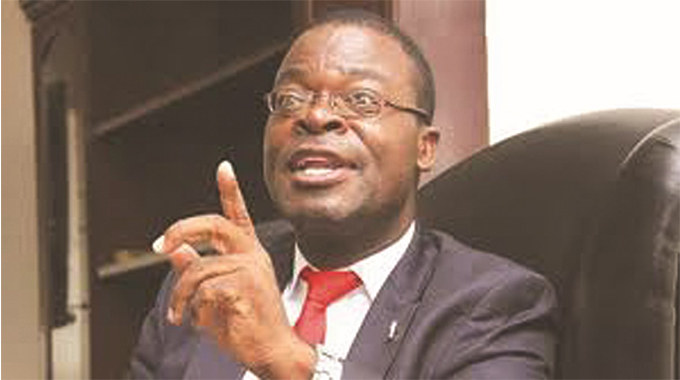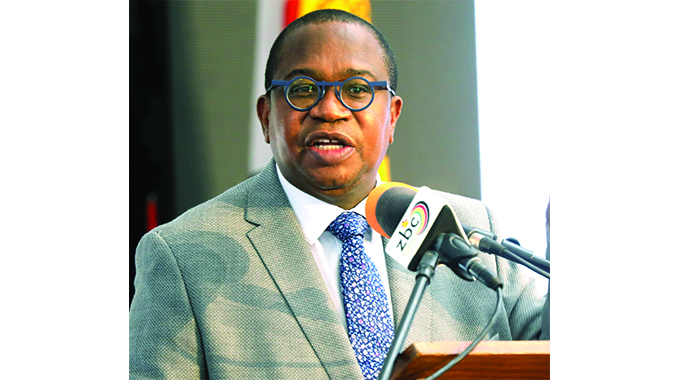Umzingwane Dam chokes

Nqobile Tshili and Yoliswa Dube-Moyo, Chronicle Reporters
TWO unregistered dams built in the Umzingwane Dam catchment area and gold panning activities along Umzingwane River have contributed to the Bulawayo supply dam not impounding adequate water since the beginning of the rainy season.
Umzingwane Dam is a critical supply dam for Bulawayo and recent council statistics showed that it was only nine percent full.
Bulawayo City Council (BCC) said if the dam does not receive significant inflows, the local authority will decommission it, resulting in intensified water shedding.
Stakeholders in Bulawayo have been questioning why the dam inflows remain low despite good rains pounding most parts of the country.
The Chronicle has since established that there are some private dams illegally constructed in the catchment area of the dam.
Zimbabwe National Water Authority (Zinwa) corporate communications and marketing manager Mrs Marjorie Munyonga said: “Investigations done by Zinwa and Upper Umzingwane sub-catchment council have revealed the existence of two unregistered weirs, which might be contributing to the low inflows into Umzingwane Dam. One of the weirs is along the Umzingwane River and the other is in Umzingwane River’s main tributary,” said Mrs Munyonga.
“Investigations are still underway to establish the sizes of these two weirs and find the extent to which their existence may have contributed to the depressed inflows into Umzingwane Dam, which is currently nine percent full. The ownership of the two weirs is also still under investigation.”
She said their investigations have also established that no significant rains have been received within Umzingwane catchment area.
“However, the latest rainfall update shows that there has been largely below normal rainfall in the Umzingwane Dam’s catchment area as the 7 million cubic-metre dam upstream of Umzingwane Dam and owned by How Mine is also yet to fill up and is even below 50 percent. The same applies to the two illegal weirs on the system, which are also yet to fill up,” she said.
Yesterday Zinwa led a Chronicle news crew to one of the unregistered water bodies.
Zinwa Umzingwane Catchment Area outreach officer Mr Lizwe Masuku also led the news crew to some of the areas where gold panning is taking place along Umzingwane River.
There has been extensive environmental damage along Umzingwane River and the area is said to stretch for several kilometres where gold panners are operating from.
The news crew observed several pits that panners were digging along Umzingwane River and the river bank has been littered with loads of sand piled by panners.
The panners employ alluvial mining techniques and in some instances their loads of sand blocks the flow of water.
Riverbed mining within the catchment areas is also reducing water flow to dams as water collects in holes and trenches left by the miners.

one of the dams that was constructed along the dam’s catchment area
While the news crew did not see any of the gold panners, Mr Masuku said they could have vanished at the sight of a vehicle approaching their panning area.
“They use binoculars and there is someone who will be on a nearby mountain reporting any activities of people approaching them. So, it is not surprising that there is no one here at the moment,” said Mr Masuku.
The news crew observed shovels, among other equipment that had been left abandoned in some pits, proving that they were nearby.
There are concerns that the panners also use mercury in their gold mining activities.
A joint operation between the BCC Parks Rangers and the Zimbabwe Republic Police has netted more than 300 gold panners, as illegal mining worsens in Matabeleland South province.
BCC is struggling to drive out illegal miners from its water works and catchment areas in Esigodini in the Umzingwane District.
The joint operation between council and police started in January last year and 336 illegal miners have been arrested for trespassing and illegal mining to date.
According to the latest full council report, the joint operation is still ongoing as the city battles to eradicate illegal mining, which is affecting inflows into the city’s supply dams.
The latest report states that 13 gold panners appeared in court in January following their arrest.
“Joint patrols were being conducted at the water catchment area by the rangers and the Zimbabwe Republic Police.
During these patrols, 13 illegal gold miners were apprehended and handed over to the courts for prosecution. This brings to 336 gold panners arrested from January to December 2021,” read the report.
A consignment of tools and mining equipment were confiscated and handed over to police as court exhibits.
“During these raids, the following tools were confiscated: 22 crowbars, 49 picks, two hammers, one detector machine, one mobile phone and two wheelbarrows. All items were handed over to ZRP as exhibits in court,” read the report.
According to Zimbabwe’s Mines and Minerals Act, miners are supposed to cover any pits they dig. If they do not, they could face a fine and up to a year in prison.
However, pits are left unfilled by artisanal gold miners, who are by definition unregistered, so there is no way to hold them accountable.
Zanu-PF Umzingwane legislator Cde Levi Mayihlome said most of the land degradation in the district is being caused by artisanal small-scale miners.
“We request that mine detectors be licensed and no one should operate a detector without a licence. They should be given geographical areas where they will operate from as it is now the norm everywhere,” said Cde Mayihlome.
While large commercial mines are regulated and have strategies to protect the local environment, small-scale miners often operate outside of ecological rules. — @nqotshili/ — @Yolisswa











Comments